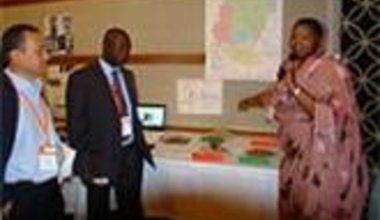Closure of UNMIS
UNMIS wound up its operations on 9 July 2011 with the completion of the interim period agreed on by the Government of Sudan and Sudan People’s Liberation Movement in the Comprehensive Peace Agreement (CPA), signed on 9 January 2005.
The mission ended its six years of mandated operations the same day South Sudan declared independence, following a CPA-provided referendum on 9 January 2011 that voted overwhelmingly in favour of secession.
In support of the new nation, the Security Council established a successor mission to UNMIS – the UN Mission in South Sudan (UNMISS) – on 9 July for an initial period of one year, with the intention to renew for further periods as required.
23 Feb
2010
With food insecurity rising after last year's poor harvest, the World Food Programme (WFP) aims to significantly increase its food delivery to Upper Nile State beginning 1 March, according to a UN official.
"The World Food Programme (WFP) plans to double their tonnage ... from 14 metric tons to approximately 27 metric tons," said UNMIS Return, Recovery, Reintegration Officer Tito Awando, who also acts as focal point for an integrated team addressing humanitarian needs in the state.
The WFP would allocate 70% of the tonnage to general food distribution and 30% to returnees/refugees and other micro projects, Mr. Awando said. "In case of emergency, WFP will do contingency stocks, which can be accessed easily when required."
The UN agency announced its decision to boost food delivery during a recent meeting it held with the integrated team, which comprises representatives of UNMIS, UN agencies and non-governmental organizations.
The WFP will distribute food based on census figures to a total of 858,869 individuals in 11 of 12 Upper Nile State counties, including Manyo, Melut, Fashoda, Maban, Malakal, Baliet, Ulang, Nassir, Maiwut, Longochuk, and Panyikang, according to Mr. Awando.
The agency had excluded Renk county due to a food surplus there, said Mr. Awando, adding that the main beneficiaries for distribution would be the elderly, lactating mothers, terminally ill patients and disabled heads of families.
Based on the 2009/2010 South Sudan Annual Food Security and Livelihood Assessment (ANLA), food security in Southern Sudan has further deteriorated as a result of drought and insecurity.
Some 4.5 million people or 70 per cent of households are currently food insecure in Southern Sudan, compared to 40 per cent last year, according to the ANLA report.
"The most food insecure states are Jonglei and Eastern Equatoria. In addition, Upper Nile and Northern Bahr El-Ghazal are more food insecure in comparison to last year," the report noted.
The food would be distributed by road and river as it was the dry season and routes were accessible, Mr. Awando said.
 UN
UN United Nations Peacekeeping
United Nations Peacekeeping





